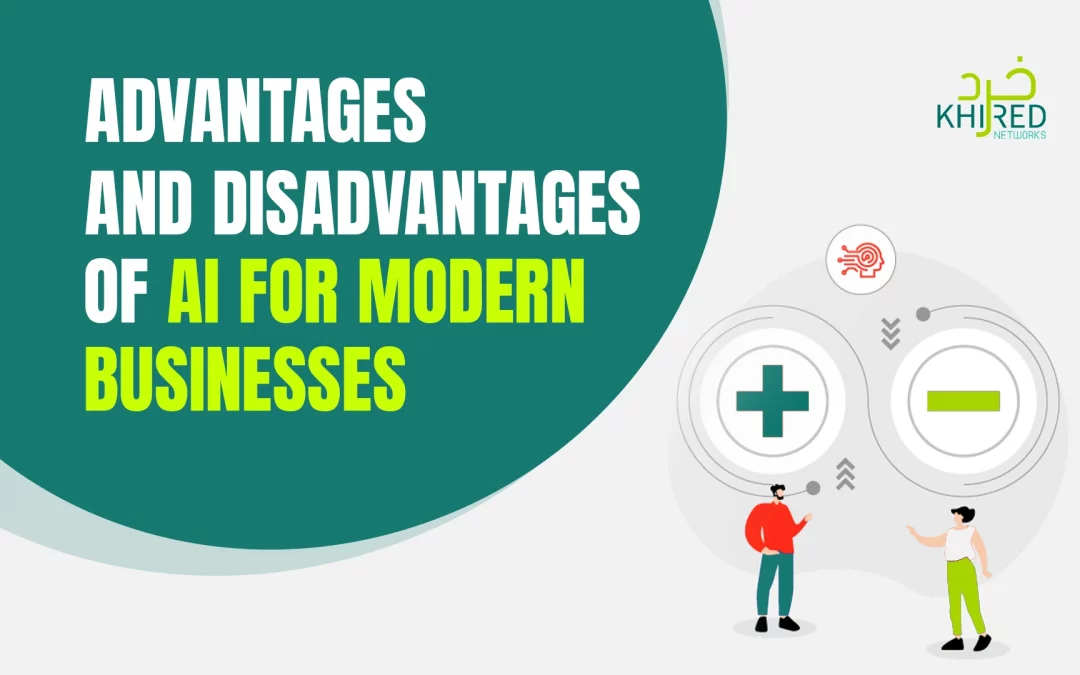Since we entered the era of AI-led digital transformation, there has been a lot of discussion about the potential risks and benefits of artificial intelligence. This technology has been the central focus of investors, innovators, and entrepreneurs recently. And there seems no end to this long discussion.
But one thing is for sure. AI is going to be a game-changer. It’s a fact no one disagrees with. Every organization, regardless of its size or industry, is leveraging AI systems to push its growth plans forward.
However, is AI worth investing in today’s digital age? While everyone is talking about the advantages of AI in business, are there any drawbacks? Most importantly, how AI limitations can impact the corporate sector amid rising concerns about its misuse.
These are some of the topics that will be covered in this blog. We will also talk about ways to make productive use of AI in business transformation while overcoming potential challenges.
So, let’s get started!
An Overview of Artificial Intelligence
AI is a revolutionary technology that makes machines smarter, more intelligent, and more efficient. This is the simplest definition of artificial intelligence.
In the language of IT, AI is a field of computer and data science that empowers machines with human intelligence. AI-powered systems are so intelligent that they can operate independently, make key decisions on their own, and effectively perform tasks that require human input.
Take the example of ChatGPT. It is an amazing chatbot powered by generative AI technology. You can use this tool to write essays, emails, or any type of long-form content. GPT-4 can even interpret data and provide actionable insights.
Various AI tools are available in the market that allow users to become more productive. Popular examples are OpenAI’s ChatGPT, Google’s Gemini, and Microsoft’s Co-pilot.
In addition to text generation, some AI tools like DALL-E, Midjourney, and Firefly can even create stunning images based on textual prompts. OpenAI is also working on the next-generation text-to-video platform Sora. It will be a huge breakthrough in the field of videography and digital content creation.
AI in Business: Good or Bad?
A lot of people ask whether investing in AI technology is worth it for businesses. Two different perspectives exist on this question. Let’s analyze both these perspectives one by one.
Advantages of AI For Businesses
Below are four unique benefits AI offers to businesses in the modern age:
1. Enhanced Productivity
Humans can do wonders. Their output, however, is limited. At some stage, they start losing their productivity. Even they take more time to complete certain tasks as compared to machines. This is where AI comes in.
AI makes humans more productive by automating repetitive tasks and offering insights to handle critical operations. According to a recent study by Accenture, businesses can increase their productivity by over 40% with the integration of AI. Moreover, AI tools can outperform in several areas, like data collection and analysis, content creation, and value addition.
Many companies are now utilizing AI tools like ChatGPT, Gemini, and Midjourney to boost team productivity and promote innovation.
2. Improved Quality
Another key area where human beings lag is the habit of making mistakes. To err is human. Some human errors can be very costly, which no employer wants.
On the other hand, the chances of human error are very minimal with AI tools. Companies can leverage this technology to produce consistent results without decreasing productivity. No errors mean improved quality, whether you are automating customer service or using an AI robot in manufacturing.
In some cases, AI significantly reduced the risk of harm or injuries to humans. For instance, AI-powered X-ray machines can reduce operators’ exposure to dangerous radioactive rays. Similarly, intelligent surveillance systems can detect intruders and prevent them from entering restricted areas.
Eventually, businesses need not risk the lives of security guards to overcome security threats.
3. Cost-efficiency
Every employer wants to cut down operational costs. The goal is very difficult to achieve, particularly in organizations with large workforces. Nevertheless, AI can change the game.
AI systems are much more advanced. They can operate at amazing speeds with high accuracy. You don’t need to bear the liabilities of human customer support agents for your organization. Instead, a single AI chatbot can handle hundreds of queries and resolve client’s problems easily. The end result: long-term cost-savings.
Similarly, insights offered by AI tools help executives make key decisions to comply with various regulations and avoid penalties. Some businesses have also saved money by automating critical tasks like strategic planning and achieving their desired objectives with success.
Disadvantages of AI for Businesses
On the flip side, the use of AI in business also has some disadvantages, like:
1. The Rise of Unemployment
Automation is good. We’ve discussed in previous sections how replacing humans with AI tools can boost team productivity while improving quality.
However, this practice would have a negative effect on human labor. Lower worker participation means high unemployment which could result in social issues. Experts have been warning of the negative implications of AI for years.
Moreover, the pace at which this technology is replacing human jobs in different sectors is alarming. By 2025, around 85 million jobs across different sectors will be replaced by AI, according to the World Economic Forum (WEC). Even the godfather of AI Geoffrey Hinton, the man behind Google’s AI ecosystem, has been talking about the dangers of AI for humanity.
Corporate social responsibility, hence, demands the safe use of AI in business.
2. Data Privacy and Security
Most AI systems don’t operate in siloes. They have to be integrated with on-premises systems and business infrastructures to perform certain tasks. A retail company, for example, can use an AI platform to collect data about orders placed by customers and analyze this information for strategic planning.
While this integration improves efficiency, it also gives rise to data privacy and security risks. Uploading critical information to AI-powered systems can be risky because they are vulnerable to cyberattacks. Unless robust measures are taken, cybercriminals can access organizational servers and steal confidential data. These data breaches can result in fraud, identity theft, or similar implications of privacy invasion.
Therefore, companies must be careful while integrating third-party AI tools with their existing systems. Make sure the provider of AI technology has a good reputation for handling cybersecurity challenges to prevent data breaches.
3. Loss of Authenticity
The functional mechanism of AI technology relies on three components: Data, algorithms, and computing power. Data, the first and the most crucial component, determines the authenticity of output.
Here lies a problem.
If the AI system is trained on data extracted from reliable sources, the system would operate perfectly. You will get authentic and trustworthy AI-generated content, whether text, images, or videos.
Conversely, if the authenticity of training data is compromised, the system’s output would be far less efficient. Businesses cannot rely on results produced by such AI systems to make key decisions. As a result, the dependence on AI remains questioned.
Hence, the developers of AI tools must ensure they are training AI models on the most credible sources of information. Otherwise, we will see a rise of fake information, fabricated data, and loss of credibility.
The Final Verdict
If you are a business owner, you cannot succeed without using AI in today’s thriving digital landscape. A race has been going on among the global business community to become a leader in AI. Tech giants like Google, Microsoft, and OpenAI are spending billions of dollars to win this race.
One thing employer must do is assess their business infrastructure and identify areas that can be improved with AI. Common areas where AI can be helpful are customer service, HR, planning, performance evaluation, and decision-making. Technology can address modern challenges and drive more innovation.
At the same time, companies must prepare for potential risks that may arise with the use of AI. Instead of boycotting this technology at all, they should find ways to make a safe integration of AI systems to achieve long-term sustainability.



